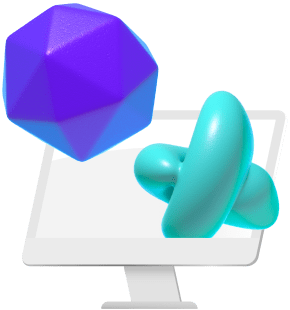DaVinci Resolve is one of the most powerful video editing and special effects software packages on the market today. While that’s great for editors who need to produce Hollywood-style videos, it can be tough to use such a powerful program on a low-end device.
What do you do when you need to make edits on your latest video but you don’t have access to your main computer? Luckily, with the right techniques, DaVinci Resolve can be used on low-end devices without a problem. Here, we’ll provide many different tips and tricks to improve your DaVinci Resolve workflow.

Photo by Andrey Novik on Unsplash
Tip 1: Shut Down Other Programs
While it may seem obvious, it’s important to shut down other software programs when you work in DaVinci Resolve. Rendering takes a lot of computing power no matter what type of device you are using. Fewer programs running in the background can make a huge difference in render times and computer performance.
Closing web browsers, email programs, and other common software can help you get more done on a low-end device. Even small programs should be closed when trying to work in DaVinci Resolve. When you close numerous programs that are running in the background, the RAM and CPU savings can really add up and make a difference for your workflow.
Tip 2: Take Advantage of Optimized Media
DaVinci Resolve has a powerful feature called “optimized media” that improves your media files for fast rendering. This can be a great solution to render issues on a low-end device.
The optimize media feature converts your media files into smaller, less system-heavy files for use while editing. It’s almost like using an offline proxy for your media files.
Even better, DaVinci Resolve offers you a range of settings that you can fine-tune to match your needs when working with optimized media. You can choose different codecs and resolutions to get just the right balance of performance and quality that you need.
When you’re done editing, the system simply switches the media files back to their original state for the render.
Tip 3: Lower the Render Quality While Editing
While you work on a video project, you don’t need to render out a high-quality final product. A lot of times, a low-res version of your project will suffice until you reach the final render.
Fast rendering is possible when you lower the resolution and video quality standards in DaVinci Resolve. Switching from UHD to HD can greatly speed up your rendering process. It also provides a good-looking render that is good enough when your part way through a project.
Render fast and easily by changing a few settings in the output menu to speed up your editing and keep your computer running smoothly.
Tip 4: Change Your Project Over to Performance Mode
As the name would suggest, the performance mode in DaVinci Resolve aims to raise the performance of your computer. If you’re struggling to deal with slow loading and editing, performance mode is a great option while working on visual effects or motion graphics.
Performance mode figures out exactly where your low-end device is lagging and optimizes the software settings to help you render fast. Rather than trying to figure out which settings need to be adjusted, performance mode handles it all for you.

Photo by JC Gellidon on Unsplash
Tip #5: Use Vagon for faster DaVinci Resolve experience
Optimization tips can be useful, but Vagon takes video editing performance to the next level. Migrate your projects to our cloud PCs in just a few clicks and experience a smooth DaVinci Resolve workflow, free from lag and long rendering times, on any device.
Tip 6: Switch DaVinci Resolve to Proxy Mode
Fast rendering in DaVinci Resolve can be tough to obtain on a low-end device, but proxy mode can be a huge help, especially when rendering visual effects or motion graphics.
Proxy mode lowers the timeline resolution while you edit but does not cause lower quality for the underlying assets. This way, you can improve your DaVinci Resolve workflow without sacrificing final render quality.
If you’re trying to figure out how to use DaVinci Resolve in a low-end computer, the proxy mode may be one of the best ways to work more quickly.
Tip 7: Use the Right Scratch Disk
Using a scratch disk can greatly improve the performance of your computer when creating visual effects or motion graphics in DaVinci Resolve. A scratch disk serves as a place for cache files to be saved and utilized throughout the editing process.
DaVinci Resolve allows you to choose which disk you use as the scratch disk. Using any drive other than the operating system drive is best, as this frees up computing power for the editing process. External drives can be a good option for a scratch disk, too. Most importantly, a solid-state drive (SSD) is your best bet due to its ability to handle fast data transfer.
Tip 8: Use Render-Cached Images to Speed Up Production
While you edit, DaVinci Resolve caches quite a bit of rendered files. Using those small, fast-rendering clips can greatly speed up the final render of your project.
In the settings, you can select “Use render-cached images” to utilize these renders. As you work and scrub back and forth on the timeline, small pieces of rendered footage will be cached in the background. When it comes time to fully render the project, the software will use these pieces to render fast and smoothly. This can be an invaluable tool when editing on a low-end device.
These are some of the best options for fast rendering in DaVinci Resolve. Utilize as many of these tricks as possible to get the best performance out of your computer when working on motion graphics, visual effects, or basic editing.




